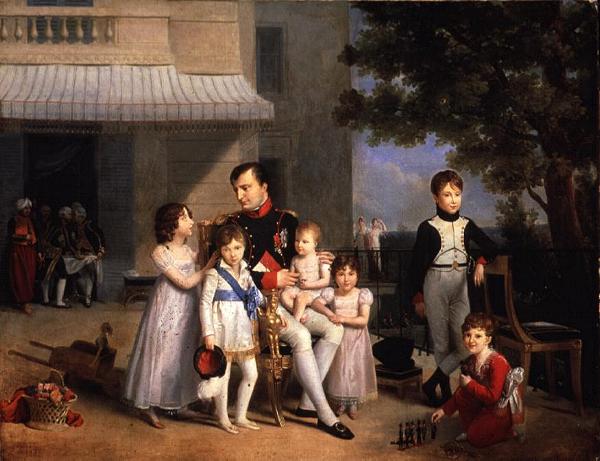MONTREAL, March 13, 2014 /Canada NewsWire Telbec/ - From May 16 to September 1, the Crypt of the Notre-Dame Basilica (Espace B),ordinarily closed to the visitors, will open to house the Treasures of Napoléon exhibition. More than 350 art objects that once belonged to the famous emperor will be on display, allowing the public an intimate look at the "Empire" style which characterized that historic era. Organized by Exhibits Development Group in cooperation with the Chalençon Collection in France, the exhibition is the largest of its kind ever to cross the Atlantic. For the occasion, the Hon. Serge Joyal will also be lending items from his personal collection.
"We are thrilled to be the hosts for this exhibition. Nothing like this has ever been seen on such a scale in North America," said Yoland Tremblay, executive director of the Fabrique de la paroisse Notre-Dame de Montréal, at a press conference announcing the exhibition's arrival. The choice of the Crypt of the Notre-Dame Basilica to house the pieces is not without significance, as this masterpiece of architecture in Montreal was built in Napoléon's time and, like him, it has stood the test of time as a privileged witness to history."
"I hope visitors will have as much pleasure as I do in discovering these aspects of the life of Napoléon I," said theParis collection's owner, Pierre-Jean Chalençon, who was in Montreal for the occasion. "Ever since my childhood, I've been fascinated by this figure of mythical proportions. To enter into the world of Napoléon is also a way to understand the origins of the society we live in today."
"The figure of Napoléon has long stimulated Quebecers' imaginations, and continues to do so. Even nowadays, in various areas, in advertising and video games for instance, his image is exploited, as are his qualities as a military leader," said the Hon. Serge Joyal, author of Le mythe de Napoléon au Canada français.
"It's quite a challenge to present this outstanding exhibition in an environment that's so full of history. It's an honour to be able to realize this project here in Montreal," said the exhibition's designer, Geoffrey C. Curley of Exhibits Development Group.
Paintings, sculptures, designs, prints and decorative art, including furniture, porcelain and tapestries, will combine to offer an authentic journey through the day-to-day environment of Napoléon. Four main areas illustrating the most significant aspects of the life of the little corporal who became Emperor will be presented:
ARCHITECTUREIt was Napoléon's ambition to make France an empire in which grandiose architecture would express the scale and magnitude of his power. He was quick to appreciate that architects could assist in asserting his power both in the present and in the future. To make this vision a reality, he turned to the architects Pierre-François-Léonard Fontaine and Charles Percier, who published their Recueil de decorations intérieures in 1801. The present exhibition includes a number of of their sketches and drawings.
SCULPTUREDuring this period, the Italian artist Antonio Canova was the standard-bearer of the international neo-classical style. The Empress Joséphine and Grand Admiral Murat, Napoléon's brother-in-law, made it a point of honour to acquire some the most sumptuous works by the great Italian master, several which appear in this exhibition.
DECORATIVE ARTSAlthough Napoléon's policy had viewed the arts primarily as a tool in propaganda promoting an official image of his regime after 1796, as emperor he succeeded, by encouraging artists and craftsmen, in restoring the arts to their former glory, which the years of revolution had eroded.
PAINTINGNeo-classicism also thrived in painting. The pre-eminent French painter of the era, Jacques-Louis David, created one of the world's most important schools of painting, and under his influence the Empire style spread throughout Europe.
These outstanding artworks will be on display in galleries and environments recreated to bring visitors into intimate contact with this larger-than-life figure. The exhibition will be divided into five sections:
The Treasures of Napoleon: A Rendez-Vous with History.

No comments:
Post a Comment